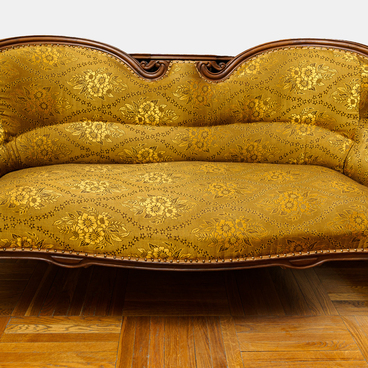The exhibition includes a mechanical floor clock with chimes. At the turn of the 20th century, the term “longcase clock” was often applied to clocks of this type. It is believed that the first floor clocks appeared in England in the 17th century. Over time, their mechanism was improved, but the appearance of the case has always remained decorative with abundant ornaments.
Floor clocks often had an important function in the interior — they demonstrated the wealth, respectability and status of the owners, reflecting their respect for classical traditions. Floor pendulum clocks are characterized by excellent accuracy, which is why up to the early 20th century they served as the main time standard in homes and businesses.
The case of the piece on display is made of light-colored wood and designed as a narrow tall cabinet with a door, inside which a clock mechanism with a pendulum and weights are placed. The mechanism is fixed to the back wall with four large screws and is in working order. The base and top of the case are rectangular, with rounded edges slightly wider than the walls. They form ridges at the top and bottom along the sides and front of the case. A large round dial of yellow metal with large black numerals from 1 to 12 and two black hands (hour and minute) is attached in front of the clock movement, concealing it.
The yellow metal disk-shaped pendulum is mounted on
a wooden rod, with two cylindrical yellow metal weights suspended on thin
chains. The hinged case door is locked on the left side by two black metal
hooks. The hooks are screwed to the side of the case, with two metal hinges
attached to the edge of the door on the inside. The door has four panes of
glass: in front of the dial there is a thin flat round glass, below there are
three vertical thick panes of glass with a wide bevel on the edges, separated
by two rails. Above the vertical panes on the outside there are three turned
details in the form of arcs. The clock was donated to the museum in 1999.

